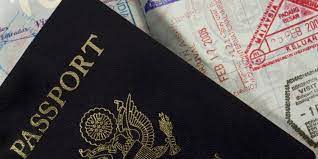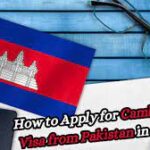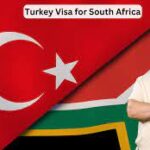Introduction
For Spanish and Slovak citizens planning a visit to Cambodia, understanding the visa requirements is crucial to ensure a smooth entry into the Kingdom of Wonder. In this comprehensive guide, we will explore the specific details of obtaining a Cambodia visa for Spanish and Slovak citizens, shedding light on the application process, requirements, and essential information.
Cambodia Visa for Spanish Citizens
CAMBODIA VISA FOR SPANISH CITIZENS eager to explore the rich cultural tapestry and historical wonders of Cambodia will need to adhere to the country’s visa regulations. As of my last knowledge update in January 2022, Cambodia provides various visa options for visitors, including tourist visas, business visas, and e-visas.
Tourist Visas:
Spanish citizens planning a leisure trip to Cambodia can apply for a tourist visa. Typically, these visas are valid for 30 days and can be extended once within the country. The application process usually requires a passport with at least six months’ validity, a passport-sized photo, a filled-out visa application form, and the applicable fee.
E-visas:
Cambodia also offers an electronic visa (e-visa) system, which provides a convenient online application process for Spanish citizens. This allows applicants to obtain their visa approval before arriving in Cambodia. The e-visa is suitable for tourism and is valid for a 30-day stay.
Business Visas:
For Spanish citizens intending to engage in business activities in Cambodia, a business visa is required. This visa type permits a longer stay and involves additional documentation, including a letter of invitation from a Cambodian company.
Cambodia Visa for Slovak Citizens
Similar to CAMBODIA VISA FOR SLOVAK CITIZENS planning a visit to Cambodia must familiarize themselves with the visa requirements applicable to their nationality.
Tourist Visas:
Slovak citizens can apply for tourist visas, which, like the Spanish counterpart, typically allow a 30-day stay. The application process involves submitting a valid passport, passport-sized photos, a completed visa application form, and the requisite fee.
E-visas:
The e-visa system is also available for Slovak citizens, streamlining the application process. By applying online, Slovak visitors can secure their visa approval in advance, facilitating a smoother entry into Cambodia.
Business Visas:
Slovak citizens intending to conduct business activities in Cambodia will need a business visa. This type of visa allows for a more extended stay and necessitates additional documentation, such as a letter of invitation from a Cambodian company.
Key Considerations for Both Citizens
Visa Fees:
It’s essential for both Spanish and Slovak citizens to be aware of the visa fees associated with their chosen visa type. These fees can vary, and applicants should verify the current rates on the official website or contact the Cambodian embassy.
Application Processing Time:
The processing time for visas can vary, so applicants are advised to plan ahead. E-visas often offer a quicker turnaround, making them a convenient option for those who wish to obtain their visa approval before traveling.
Embassy or Online Application:
Spanish and Slovak citizens can choose between applying for a visa at the Cambodian embassy or utilizing the online application system. The online process is generally more convenient, but applicants should ensure they meet all requirements before submitting their applications.
Conclusion
Navigating the Cambodia visa process for Spanish and Slovak citizens involves understanding the specific requirements for each nationality. Whether opting for a tourist visa, e-visa, or business visa, careful preparation and adherence to the application process are key to a successful and enjoyable visit to the Kingdom of Cambodia. As visa regulations may change, it is advisable to check the official website or contact the embassy for the most up-to-date information before planning your trip.



